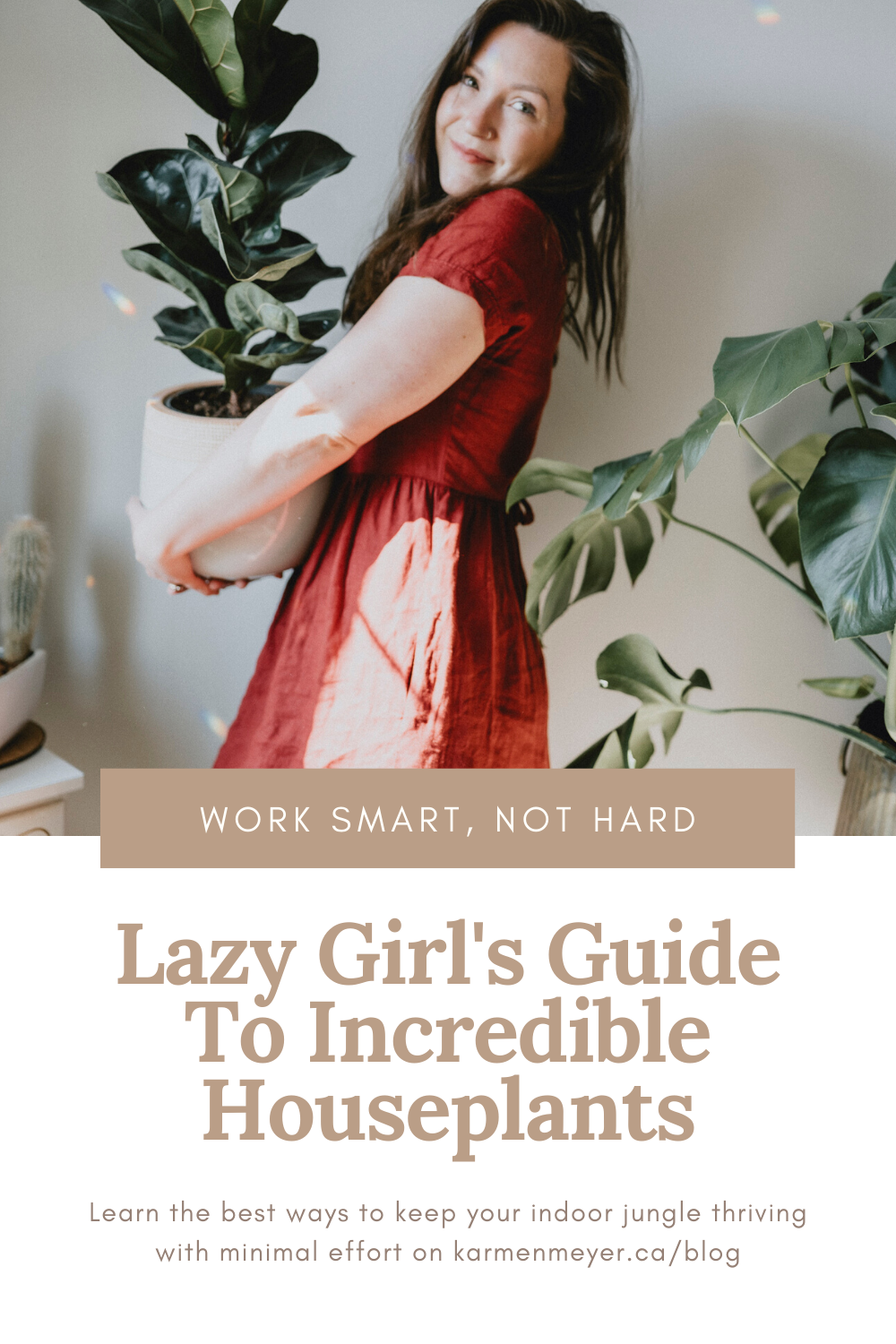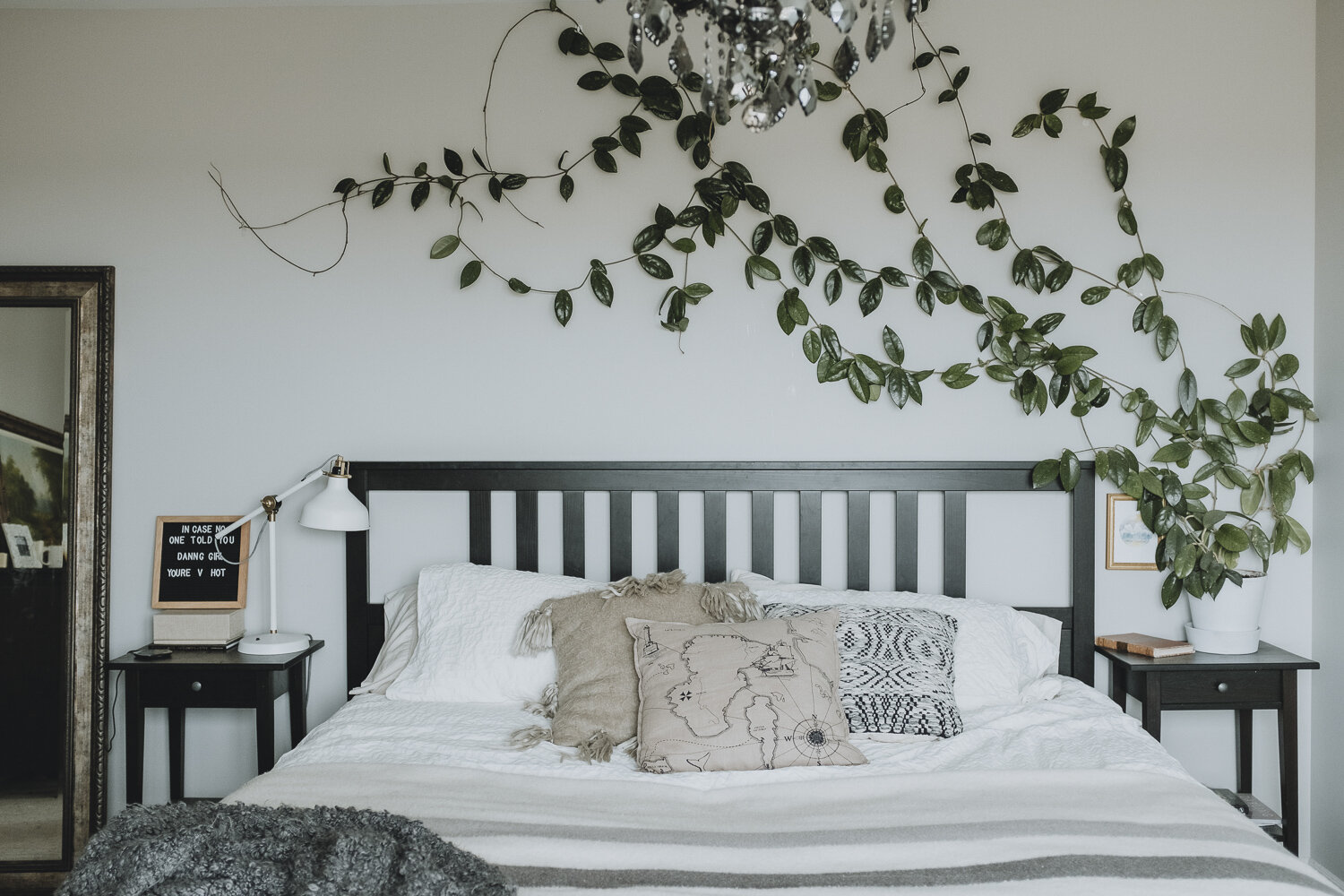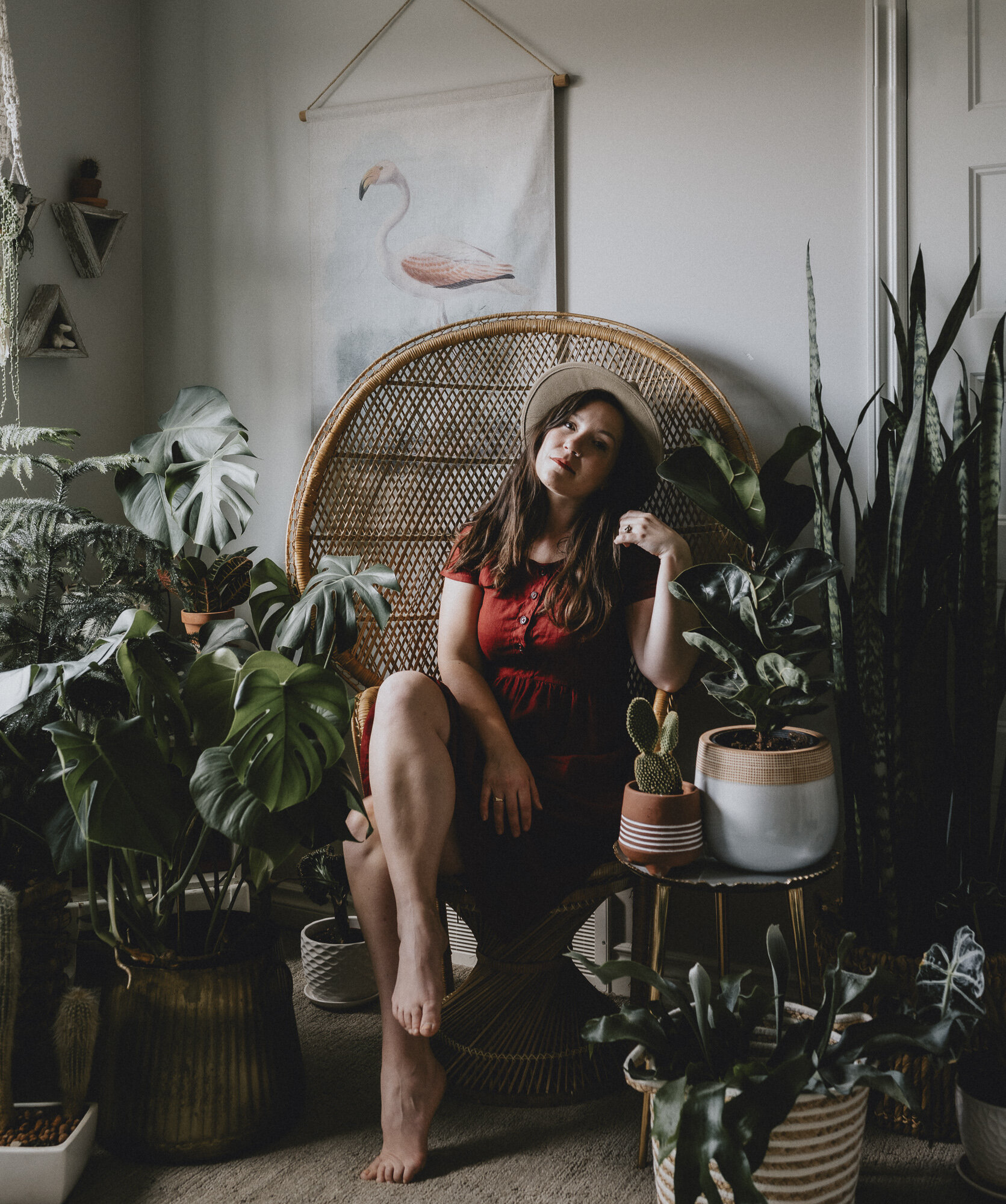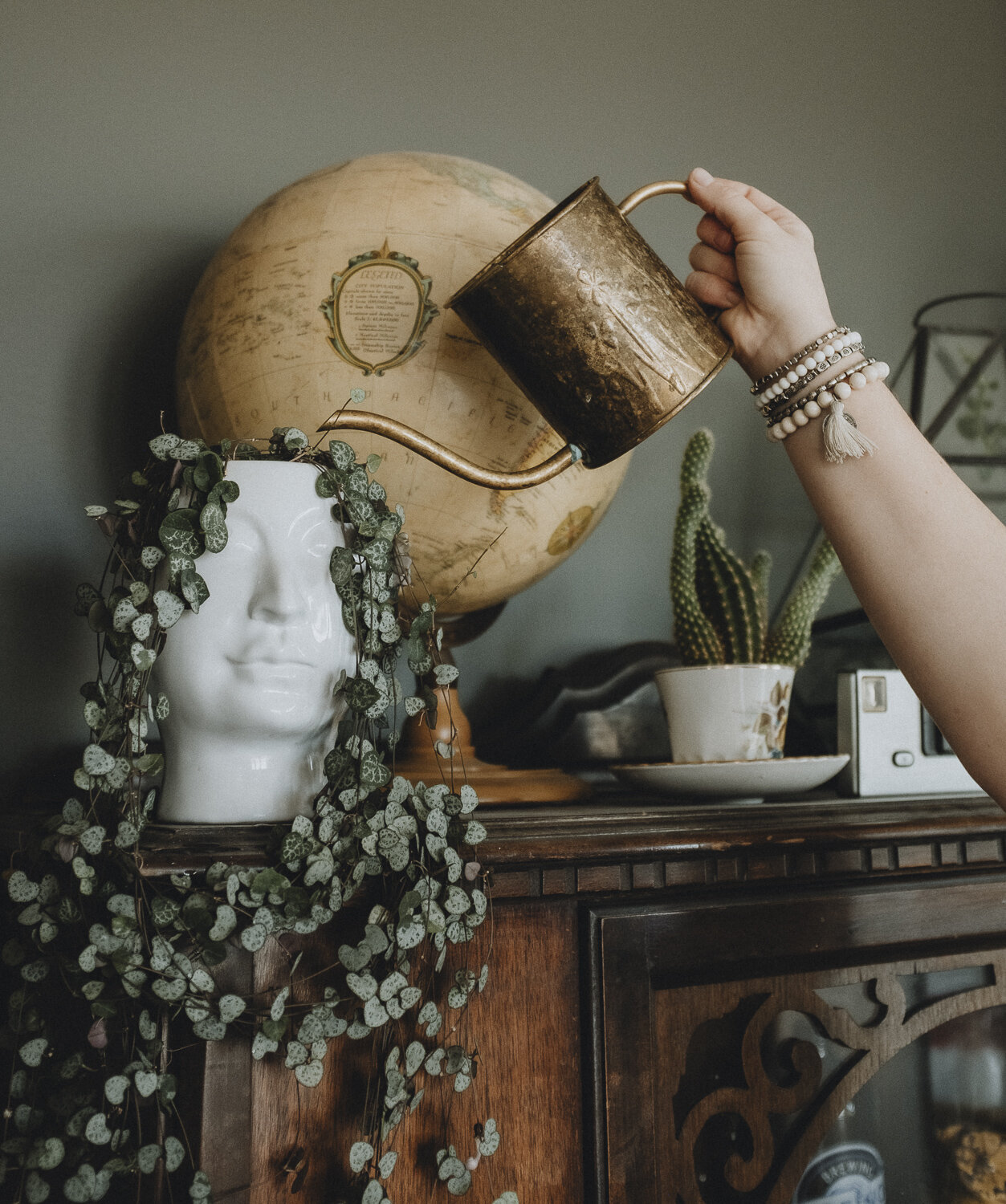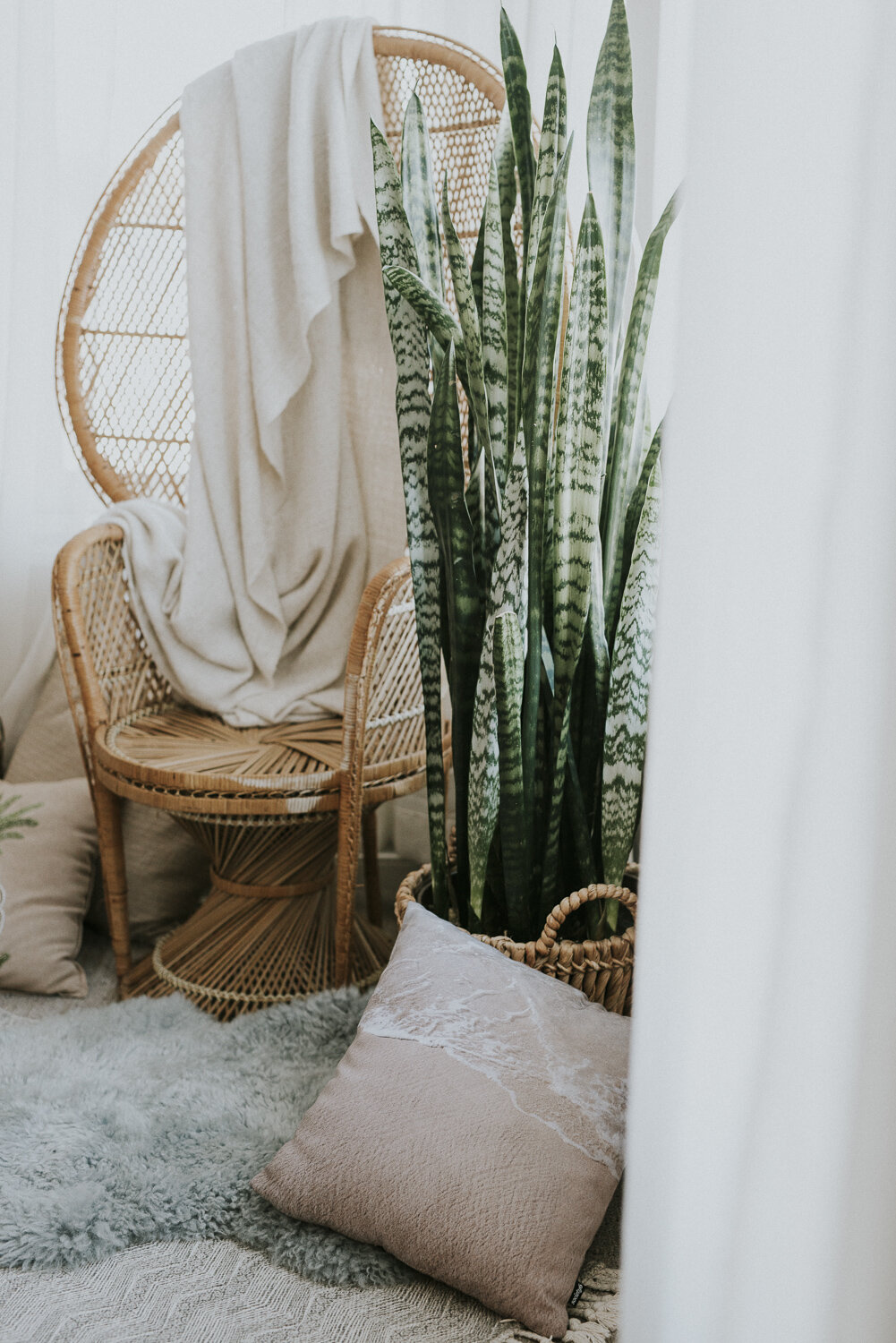Lazy Girl's Guide to Incredible House Plants
Ok so I probably wouldn’t describe myself as lazy, and I am willing to bet you aren’t either! But with every thing else in life that I choose to share my time and energy with (Oh hey there family, friends, pets, work and adventure) I much prefer to work smart, not hard when it comes to my house plants. And let me tell you, my plants are doing absolutely wonderful without weekly showers, special soil changes, weekly fertilizers, artificial lighting or water set-ups. Over here, simplicity is key.
And judging by the amount of DMs I get about plants, I’m guessing you are kinda in love with keeping a little nature indoors too. And maybe, just maybe, your indoor jungle has been booming now that you have all this time at home, thanks Covid. Be honest, did you buy a bunch of plants to keep you company?! Well you are in good company and all I gotta say is y’all are my kinda people and I am super excited to share what has been working for me and my lil’ indoor jungle here in Central Alberta. So let’s get growing (sorry couldn’t resist, lol):
OK so first off, throw out the watering calendar. It’s safe to say many plants perish at the hands of their doting owners due to over-watering. I know you mean well, but please resist the urge to water just because it’s Wednesday, and that is the day you decided to set aside time every week to water your sweet plant babies. A plant’s water needs fluctuate massively depending on their size, the time of year, the type of soil they are in, etc. The most reliable and simplest way to learn whether your plants need water is to stick your finger into the soil and feel if it is dry. It’s that easy. Most plants do best if you wait until the top 1 to 2 inches of soil is dry before you water! If the soil is still moist check again in a couple days. Eventually you will start to learn your plants cues, but when in doubt always do the finger test.
Ok now, get yourself a tiny watering can. This is something I accidentally discovered after finding the cutest little antique watering can at the thrift store. I bought the thing purely for aesthetics, but let me tell you my plants have never been happier! The tiny spout and small volume makes it way harder to accidentally overwater. In fact, I’m a little embarrassed to admit this but my little watering can sprung a leak this winter and I had to use a regular sized water pitcher and managed to overwater several houseplants. I should know better! I do know better. Thankfully they all recovered but it’s just THAT easy to overwater your plants. Needless to say, my tiny watering can has been repaired and is back in action!
Drainage is key! Keep your plants in their nursery pots and place that pot inside a decorative pot if you wish. This is one of the easiest ways to ensure that your plant friend receives the excellent drainage it needs! Best part? It’s literally the easiest thing you could do!
If you do ever need to re-pot your plants, do yourself a solid and make sure your new pot has a drainage hole! I do have several plants without drainage holes from way back before I knew any better.… and they are alive and well (thanks to the finger check and tiny watering can lol). But, if you are new to the plant game or prone to overwatering ALWAYS make sure that your pot has drainage.
Start with plants that are flexible! I always recommend snake plants, jade plants, cast iron plant, yucca, hoya and dracaena as they seem to tolerate a whole variety of lighting and watering situations. And in the case of my jade and yucca, some genuine abuse thanks to my dogs and kids. I am very happy to report they have both fully recovered from the aforementioned atrocities and are looking better then ever!
Start with smaller to medium sized plants. I find they adjust better to their new accommodations. It’s also waaaay less stressful for you. If they die (and some will friends) you aren’t out the big bucks. Besides, it is SO satisfying to watch them grow nice and big under your own care. One of my first plants was a medium, sized snake plant and now 6 years later it’s almost 5 feet tall!
Choose plants that suit the lighting conditions in your home. Trust me, you are fighting a losing battle with most plants if you don’t listen to that little tag telling you the lighting requirements. If your plant didn’t come with that info then hit up google my friend. But a couple general guidelines you can follow are: Tropicals need bright indirect light. Citrus, cactus and succulents want ALLL the bright, direct light. West or south facing window for these babies. Ferns and other low light plants, still need some light but would be happiest in a room with north or east facing windows and no direct light (plants get sunburn too!).
Check 9 times for bugs. Bugs are the ultimate fear for any plant owner (ewwww). And while they don’t harm anything except your plants, it can be really annoying to get rid of them once you bring them home and just downright creepy knowing that they are there. Which is why I always thoroughly check every plant before bringing it home. They are teensy little things that like to hide, so look close. Especially at the undersides of the leaves and bases of the leaves. And then keep that cutie in quarantine for a couple weeks to make double sure!! One sick plant is a lot easier to deal with than more, amiright?
Don’t crowd your plants. Listen, I know you don’t want to hear this. But if you keep plants for long enough and you are adding to your jungle, not matter how careful you are….. You will someday end up with a pest. The first pest I got was about 4 years into owning plants My favourite palm tree became infested with spider mites. CUE THE PANIC!! As soon as I realized what was happening I threw a garbage bag over that baby and begged Brad to take it far away! Since then I have successfully treated my Bird of Paradise for spider mites, returned a new plant with thrips, and tossed wee cactus with mealy bugs. Getting the occasional pest isn’t the end of the world, but it will quickly become unmanageable if it spreads to your other plants. As a general rule you want your plants to be like a high school dance. A couple inches between each other at all times!
Enjoy your time together. Growing houseplants is supposed to be fun and relaxing. Give them names, take time to check them over when you water them, get way too excited over brand new leaves, and allow yourself a moment to feel grounded when feeling the soil for moisture. It can be tempting to rush through your plant care, but I encourage you to take the opportunity to slow down and revel at nature. And if you kill a few plants in the process, don’t be too hard on yourself. Choose a new plant and try again. You’ll find your stride, promise.
I hope this helps up your plant game! If you have any plant Q’s drop a comment below or come find me on Instagram, @karmenmeyerphotography!
Warmly,
Karmen

